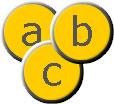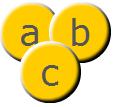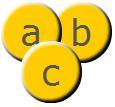LDisplayObjectContainer Class
The LDisplayObjectContainer class is the base class for all objects that can serve as display object containers on the display list. The display list manages all objects displayed in the runtimes. Use the DisplayObjectContainer class to arrange the display objects in the display list. Each DisplayObjectContainer object has its own child list for organizing the z-order of the objects. The z-order is the front-to-back order that determines which object is drawn in front, which is behind, and so on.
LDisplayObjectContainer is an abstract base class; therefore, you cannot call LDisplayObjectContainer directly.
The LDisplayObjectContainer class is an abstract base class for all objects that can contain child objects. It cannot be instantiated directly.
Constructor
LDisplayObjectContainer
()
public
Item Index
Methods
Properties
Methods
addChild
-
child
Adds a child DisplayObject instance to this LDisplayObjectContainer instance. The child is added to the front (top) of all other children in this LDisplayObjectContainer instance. (To add a child to a specific index position, use the addChildAt() method.)
If you add a child object that already has a different display object container as a parent, the object is removed from the child list of the other display object container.
Parameters:
-
childLDisplayObjectThe LDisplayObject instance to add as a child of this LDisplayObjectContainer instance.
Returns:
The LDisplayObject instance that you pass in the child parameter.
Example:
var bitmapdata = new LBitmapData("#FF0000",0,0,100,100);
var bitmap = new LBitmap(bitmapdata);
var layer = new LSprite();
addChild(layer);
layer.addChild(bitmap);addChildAt
-
child -
index
Adds a child LDisplayObject instance to this LDisplayObjectContainer instance. The child is added at the index position specified. An index of 0 represents the back (bottom) of the display list for this LDisplayObjectContainer object.
For example, the following example shows three display objects, labeled a, b, and c, at index positions 0, 2, and 1, respectively:

If you add a child object that already has a different display object container as a parent, the object is removed from the child list of the other display object container.
Parameters:
-
childLDisplayObjectchild The LDisplayObject instance to add as a child of this LDisplayObjectContainer instance.
-
indexIntThe index position to which the child is added. If you specify a currently occupied index position, the child object that exists at that position and all higher positions are moved up one position in the child list.
Returns:
The LDisplayObject instance that you pass in the child parameter.
Example:
var container = new LSprite();
var circle1 = new LSprite();
var circle2 = new LSprite();
container.addChild(circle1);
container.addChildAt(circle2, 0);
trace(container.getChildAt(0) == circle2); // true
trace(container.getChildAt(1) == circle1); // trueaddEventListener
-
type -
listener
Registers an event listener object with an LEventDispatcher object so that the listener receives notification of an event. You can register event listeners on all nodes in the display list for a specific type of event, phase, and priority.
After you successfully register an event listener, you cannot change its priority through additional calls to addEventListener(). To change a listener's priority, you must first call removeListener(). Then you can register the listener again with the new priority level.
If you no longer need an event listener, remove it by calling removeEventListener(), or memory problems could result.
Parameters:
-
typeStringThe type of event.
-
listenerFunctionThe listener function that processes the event.
callParent
-
functionName -
arguments
call the method of parent。
Parameters:
-
functionNameStringfunction's name
-
argumentsArrayFixed value : arguments
Example:
function funA(){
LExtends(this,LObject,[]);
}
funA.prototype.myName = function(){
return "AAA";
}
function funB(){
LExtends(this,funA,[]);
}
funB.prototype.myName = function(){
return "BBB";
}
function funC(){
LExtends(this,funA,[]);
}
funC.prototype.myName = function(){
return this.callParent("myName",arguments);
}
LInit(1000/50,"legend",800,150,main);
function main(){
LGlobal.setDebug(true);
var objB = new funB();
trace(objB.myName());//BBB
var objC = new funC();
trace(objC.myName());//AAA
}dispatchEvent
-
event
Dispatches an event into the event flow. The event target is the LEventDispatcher object upon which the dispatchEvent() method is called.
Parameters:
-
eventLEvent | StringThe Event object that is dispatched into the event flow. If the event is being redispatched, a clone of the event is created automatically. After an event is dispatched, its target property cannot be changed, so you must create a new copy of the event for redispatching to work.
Returns:
A value of true if the event was successfully dispatched. function MyEventObject(){ var self = this; LExtends(self,LSprite,[]); self.graphics.drawRect(1,"#000000",[0,0,100,100],true,"#000000"); self.graphics.drawRect(1,"#FF0000",[100,0,100,100],true,"#FF0000"); self.addEventListener(LMouseEvent.MOUSE_UP,self.onclick); self.addEventListener(MyEventObject.CLICK_LEFT,function(event){ trace("dispatchEvent"); }); self.addEventListener(MyEventObject.CLICK_RIGHT,function(event){ trace("dispatchEvent event.name = " + event.name); }); } MyEventObject.CLICK_LEFT = "click_left"; MyEventObject.CLICK_RIGHT = "click_right"; MyEventObject.prototype.onclick = function(event){ var self = event.clickTarget; if(event.selfX < 100){ self.dispatchEvent(MyEventObject.CLICK_LEFT); }else{ var event = new LEvent(MyEventObject.CLICK_RIGHT); event.name = "LEvent Test"; self.dispatchEvent(event); } }
getBounds
-
targetCoordinateSpace
Returns a rectangle that defines the area of the display object relative to the coordinate system of the targetCoordinateSpace object.
Parameters:
-
targetCoordinateSpaceLDisplayObjectThe display object that defines the coordinate system to use.
Returns:
The rectangle that defines the area of the display object relative to the targetCoordinateSpace object's coordinate system.
getChildAt
-
index
Returns the child display object instance that exists at the specified index.
Parameters:
-
indexIntThe index position of the child object.
Returns:
The child display object at the specified index position.
Example:
var container = new LSprite();
addChild(container);
var sprite1 = new LSprite();
var sprite2 = new LSprite();
var sprite3 = new LSprite();
container.addChild(sprite1);
container.addChild(sprite2);
container.addChildAt(sprite3, 0);
trace(container.getChildAt(0) == sprite3); // true
trace(container.getChildAt(1) == sprite1); // true
trace(container.getChildAt(2) == sprite2); // truegetChildByName
-
name
Returns the child display object that exists with the specified name. If more that one child display object has the specified name, the method returns the first object in the child list.
The getChildAt() method is faster than the getChildByName() method. The getChildAt() method accesses a child from a cached array, whereas the getChildByName() method has to traverse a linked list to access a child.
Parameters:
-
nameStringThe name of the child to return.
Returns:
The child display object with the specified name.
Example:
var container = new LSprite();
var sprite1 = new LSprite();
sprite1.name = "sprite1";
var sprite2 = new LSprite();
sprite2.name = "sprite2";
container.addChild(sprite1);
container.addChild(sprite2);
var target = container.getChildByName("sprite1");
trace(container.getChildIndex(target)); // 0getChildIndex
-
The
Returns the index position of a child LDisplayObject instance.
Parameters:
-
TheLDisplayObjectDisplayObject instance to identify.
Returns:
The index position of the child display object to identify.
Example:
var container = new LSprite();
addChild(container);
var sprite1 = new LSprite();
sprite1.name = "sprite1";
var sprite2 = new LSprite();
sprite2.name = "sprite2";
container.addChild(sprite1);
container.addChild(sprite2);
trace(container.getChildIndex(sprite1)); // 0getDataURL
()
Base64 Image
public
Get a string of base64-encoded image.
Returns:
a string of base64-encoded image.
getRootCoordinate
()
LPoint
public
Get the coordinates (Relative to the canvas).
Returns:
a LPoint object。
hasEventListener
-
type
Checks whether the LEventDispatcher object has any listeners registered for a specific type of event. This allows you to determine where an LEventDispatcher object has altered handling of an event type in the event flow hierarchy.
Parameters:
-
typeStringThe type of event.
Returns:
A value of true if a listener of the specified type is registered; false otherwise.
remove
()
public
Remove self from the parent container.
removeAllChild
()
Removes all the child LDisplayObject instance from the child list of the LDisplayObjectContainer instance.
removeAllEventListener
()
public
Removes all the listeners from the LEventDispatcher object.
removeChild
-
The
Removes the specified child LDisplayObject instance from the child list of the LDisplayObjectContainer instance. The parent property of the removed child is set to null , and the object is garbage collected if no other references to the child exist. The index positions of any display objects above the child in the LDisplayObjectContainer are decreased by 1.
Parameters:
-
TheLDisplayObjectLDisplayObject instance to remove.
Returns:
The LDisplayObject instance that you pass in the child parameter.
Example:
function main () {
var container = new LSprite();
addChild(container);
var circle1 = new LSprite();
circle1.graphics.drawRect(1,"#000000",[0,0,50,50]);
var circle2 = new LSprite();
circle2.graphics.drawRect(1,"#000000",[100,100,50,50]);
container.addChild(circle1);
container.addChild(circle2);
container.addEventListener(LMouseEvent.MOUSE_DOWN, clicked);
}
function clicked (event) {
event.currentTarget.removeChild(event.target);
}removeChildAt
-
index
Removes a child LDisplayObject from the specified index position in the child list of the LDisplayObjectContainer. The parent property of the removed child is set to null, and the object is garbage collected if no other references to the child exist. The index positions of any display objects above the child in the LDisplayObjectContainer are decreased by 1.
Parameters:
-
indexIntThe child index of the LDisplayObject to remove.
Returns:
The LDisplayObject instance that was removed.
Example:
var container = new LSprite();
addChild(container);
var sprite1 = new LSprite();
sprite1.name = "sprite1";
var sprite2 = new LSprite();
sprite2.name = "sprite2";
container.addChild(sprite1);
container.addChild(sprite2);
trace(container.numChildren) // 2
container.removeChildAt(0);
trace(container.numChildren) // 1
trace(container.getChildAt(0).name); // sprite2removeEventListener
-
type -
listener
Removes a listener from the LEventDispatcher object. If there is no matching listener registered with the LEventDispatcher object, a call to this method has no effect.
Parameters:
-
typeStringThe type of event.
-
listenerFunctionThe listener object to remove.
setChildIndex
-
child -
index
Changes the position of an existing child in the display object container. This affects the layering of child objects. For example, the following example shows three display objects, labeled a, b, and c, at index positions 0, 1, and 2, respectively:

When you use the setChildIndex() method and specify an index position that is already occupied, the only positions that change are those in between the display object's former and new position. All others will stay the same. If a child is moved to an index LOWER than its current index, all children in between will INCREASE by 1 for their index reference. If a child is moved to an index HIGHER than its current index, all children in between will DECREASE by 1 for their index reference. For example, if the display object container in the previous example is named container, you can swap the position of the display objects labeled a and b by calling the following code:
container.setChildIndex(container.getChildAt(1), 0);
This code results in the following arrangement of objects:

Parameters:
-
childLDisplayObjectThe child LDisplayObject instance for which you want to change the index number.
-
indexIntThe resulting index number for the child display object.
Returns:
The resulting index number for the child display object.
Example:
LInit(50, "legend", 800, 480, main);
var container;
function main () {
container = new LSprite();
addChild(container);
var circle1 = new LSprite();
circle1.graphics.drawRect(1,"#000000",[0,0,100,100],true,"#000000");
circle1.addEventListener(LMouseEvent.MOUSE_DOWN, clicked);
var circle2 = new LSprite();
circle2.graphics.drawRect(1,"#FF0000",[40,80,100,100],true,"#FF0000");
circle2.addEventListener(LMouseEvent.MOUSE_DOWN, clicked);
var circle3 = new LSprite();
circle3.graphics.drawRect(1,"#008800",[80,0,100,100],true,"#008800");
circle3.addEventListener(LMouseEvent.MOUSE_DOWN, clicked);
container.addChild(circle1);
container.addChild(circle2);
container.addChild(circle3);
}
function clicked (event) {
var circle = event.target;
var topPosition = container.numChildren - 1;
container.setChildIndex(circle, topPosition);
}Properties
alpha
Float
public
Indicates the alpha transparency value of the object specified. Valid values are 0 (fully transparent) to 1 (fully opaque). The default value is 1. Display objects with alpha set to 0 are active, even though they are invisible.
Default: 0
blendMode
String
public
A value from the LBlendMode class that specifies which blend mode to use. A bitmap can be drawn internally in two ways. If you have a blend mode enabled or an external clipping mask, the bitmap is drawn by adding a bitmap-filled square shape to the vector render. If you attempt to set this property to an invalid value, runtimes set the value to LBlendMode.NORMAL.
Default: null
childList
Array
public
the child display object list
filters
Array
public
An indexed array that contains each filter object currently associated with the display object.
Default: null
mask
LDisplayObject
public
The calling display object is masked by the specified mask object. To ensure that masking works when the Stage is scaled, the mask display object must be in an active part of the display list. The mask object itself is not drawn. Set mask to null to remove the mask.
Default: null
mouseChildren
Boolean
public
Determines whether or not the children of the object are mouse, enabled.
Example:
LGlobal.setDebug(true);
var container1 = new LSprite();
container1.x = container1.y = 20;
var container2 = new LSprite();
container2.x = 20;
container2.y = 100;
container2.mouseChildren = false;
addChild(container1);
addChild(container2);
var button01 = new LButtonSample1("mouseChildren=true");
container1.addChild(button01);
button01.addEventListener(LMouseEvent.MOUSE_DOWN,function(e){
trace("button01 click");
});
var button02 = new LButtonSample1("mouseChildren=false");
container2.addChild(button02);
button02.addEventListener(LMouseEvent.MOUSE_DOWN,function(e){
trace("button02 click");
});mouseEnabled
Boolean
public
Specifies whether this object receives mouse, or other user input, messages. The default value is true, which means that by default any InteractiveObject instance that is on the display list receives mouse events or other user input events. If mouseEnabled is set to false, the instance does not receive any mouse events (or other user input events like keyboard events). Any children of this instance on the display list are not affected. To change the mouseEnabled behavior for all children of an object on the display list, use LDisplayObjectContainer.mouseChildren.
Example:
LGlobal.setDebug(true);
var button01 = new LButtonSample1("mouseEnabled=true");
button01.x = button01.y = 20;
addChild(button01);
button01.addEventListener(LMouseEvent.MOUSE_DOWN,function(e){
trace("button01 click");
});
var button02 = new LButtonSample1("mouseEnabled=false");
button02.x = 20;
button02.y = 150;
button02.mouseEnabled = false;
addChild(button02);
button02.addEventListener(LMouseEvent.MOUSE_DOWN,function(e){
trace("button02 click");
});numChildren
Int
public
Returns the number of children of this object.
Example:
var container1 = new LSprite();
var container2 = new LSprite();
var circle1 = new LSprite();
circle1.graphics.drawRect(1,"#000000",[0,0,50,50]);
var circle2 = new LSprite();
circle2.graphics.drawRect(1,"#000000",[100,100,50,50]);
container2.addChild(container1);
container1.addChild(circle1);
container1.addChild(circle2);
trace(container1.numChildren); // 2
trace(container2.numChildren); // 1
trace(circle1.numChildren); // 0
trace(circle2.numChildren); // 0objectIndex
Int
public
ID of the object
rotate
Float
public
Indicates the rotation of the LDisplayObject instance, in degrees, from its original orientation. Values from 0 to 180 represent clockwise rotation; values from 0 to -180 represent counterclockwise rotation. Values outside this range are added to or subtracted from 360 to obtain a value within the range. For example, the statement my_video.rotate = 450 is the same as my_video.rotate = 90.
Default: 0
scaleX
Float
public
Indicates the horizontal scale (percentage) of the object as applied from the registration point. The default registration point is (0,0). 1.0 equals 100% scale.
Default: 1
scaleY
Float
public
Indicates the vertical scale (percentage) of an object as applied from the registration point of the object. The default registration point is (0,0). 1.0 is 100% scale.
Default: 1
visible
Boolean
public
Whether or not the display object is visible. Display objects that are not visible are disabled. For example, if visible=false for an LInteractiveObject instance, it cannot be clicked.
Default: true
x
Float
public
Indicates the x coordinate of the LDisplayObject instance relative to the local coordinates of the parent LDisplayObjectContainer. If the object is inside a LDisplayObjectContainer that has transformations, it is in the local coordinate system of the enclosing LDisplayObjectContainer. Thus, for a LDisplayObjectContainer rotated 90° counterclockwise, the LDisplayObjectContainer's children inherit a coordinate system that is rotated 90° counterclockwise. The object's coordinates refer to the registration point position.
Default: 0
y
Float
public
Indicates the y coordinate of the LDisplayObject instance relative to the local coordinates of the parent LDisplayObjectContainer. If the object is inside a LDisplayObjectContainer that has transformations, it is in the local coordinate system of the enclosing LDisplayObjectContainer. Thus, for a LDisplayObjectContainer rotated 90° counterclockwise, the LDisplayObjectContainer's children inherit a coordinate system that is rotated 90° counterclockwise. The object's coordinates refer to the registration point position.
Default: 0
Events
LEvent.ENTER_FRAME
[broadcast event] Dispatched when the playhead is entering a new frame.
LMouseEvent.DOUBLE_CLICK
Dispatched when a user presses and releases the main button of a pointing device twice in rapid succession over the same LInteractiveObject.
LMouseEvent.MOUSE_DOWN
Dispatched when a user presses the pointing device button over an LInteractiveObject instance.
LMouseEvent.MOUSE_MOVE
Dispatched when a user moves the pointing device while it is over an LInteractiveObject.
LMouseEvent.MOUSE_OUT
Dispatched when the user moves a pointing device away from an LInteractiveObject instance.
LMouseEvent.MOUSE_OVER
Dispatched when the user moves a pointing device over an LInteractiveObject instance.
LMouseEvent.MOUSE_UP
Dispatched when a user releases the pointing device button over an LInteractiveObject instance.
